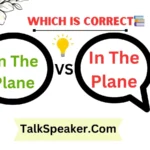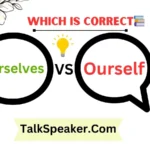Last updated on October 11th, 2024 at 09:44 am
When it comes to the English language, even seemingly similar words can carry nuanced differences that influence their proper usage.
Two such words are “entwined” and “intertwined.” Although they are often used interchangeably, understanding their distinct meanings and contexts can enhance your writing and communication.
This guide explores these two terms, offering insights into their definitions, usages, and applications in various contexts.
Defining Entwined and Intertwined
Definition of Entwined
The word “entwined” originates from the Old English word twine, which means “to twist.” Its current usage implies a physical or metaphorical weaving together of elements. In essence, something that is entwined is closely connected in a way that suggests a deliberate or natural twisting or winding together.
- Example: “The vines were entwined around the old oak tree, forming a natural barrier.”
In this context, “entwined” conveys a sense of being wrapped around something in a more intimate or deliberate fashion. The focus is often on a close, interlinked connection.
Definition of Intertwined
On the other hand, “intertwined” comes from the combination of “inter,” meaning “between,” and “twine.” This term also implies a twisting or weaving, but it often carries a broader implication of mixing or blending various elements together.
- Example: “Their destinies were intertwined, influencing each other’s paths in unexpected ways.”
Here, “intertwined” suggests a more complex, perhaps less tangible connection, often involving multiple factors or elements that are mixed together in a significant manner.
Contextual Usage and Variations
Usage in American English
Both “entwined” and “intertwined” are used frequently in American English, but they fit different contexts. Understanding where each term is typically used can help you select the appropriate word.
- “Entwined” is commonly used in physical descriptions and emotional or personal contexts. For example, “entwined” is often used to describe the way physical objects, like vines, are wrapped around something, or how personal relationships or emotions are closely connected.
- “Intertwined” is often used in broader, more abstract contexts, such as describing complex relationships or connections between various factors. It’s common in discussions about fate, destiny, or complex systems where elements are deeply connected.
Contextual Influences
The choice between “entwined” and “intertwined” can depend significantly on context. Here’s a breakdown:
- Physical vs. Abstract Connections: Use “entwined” when describing something that is physically wrapped or closely linked. Use “intertwined” for abstract, less tangible connections.
- Personal vs. General: “Entwined” tends to be more personal, while “intertwined” can be used in general or broad contexts.
Practical Examples and Visualizations
Examples in Everyday Language
Here are practical examples illustrating the use of both terms:
- Entwined: “The couple’s lives were so entwined that they completed each other’s sentences.”
- Intertwined: “The themes of love and loss are intertwined throughout the novel.”
Visual Representation
To better understand the distinction, consider the following visual representation:
| Entwined | Intertwined |
| Vines wrapped around a tree. | Threads in a complex tapestry. |
| Personal relationships. | Fate and destiny. |
Trends and Popular Usage
Analysis of Usage Trends
Recent data from tools like Google Ngram provides insights into how often “entwined” and “intertwined” are used and in what contexts.
- “Entwined” appears more frequently in discussions about personal relationships and physical objects.
- “Intertwined” is prevalent in literature and discussions about complex systems or abstract concepts.
Popularity in Modern Media
Both terms are widely used in modern media. For example, literature often uses “intertwined” to describe complex narrative threads, while “entwined” might appear in more intimate or physical contexts.
Symbolic and Emotional Connotations
Entwined in Relationships and Emotions
“Entwined” often evokes a sense of closeness and intimacy. It’s used to describe strong, personal connections:
- Example: “Their fates were entwined from the moment they met.”
This use highlights the deep, personal connection and often implies a sense of inevitability or closeness.
Intertwined in Concepts of Destiny and Fate
“Intertwined” frequently appears in discussions about fate or broader, less personal connections:
- Example: “The destinies of the two nations were intertwined due to their shared history.”
Here, “intertwined” implies a complex, often unavoidable connection influenced by various factors.
Literary and Artistic Usage
Entwined in Literature and Art
In literature and art, “entwined” is used to describe intricate personal or physical connections:
- Example: “In Shakespeare’s play, the themes of love and power are entwined in a tragic narrative.”
Intertwined in Literary and Artistic Expressions
“Intertwined” is often used to describe complex, layered meanings or connections:
- Example: “The novel’s plot is intertwined with historical events, creating a rich tapestry of storytelling.”
Making the Choice: When to Use Which Term
Guidelines for Choosing Between Entwined and Intertwined
- Use “entwined” for physical or close personal connections.
- Use “intertwined” for abstract, complex, or broader connections.
Common Misuses and Pitfalls
- Misuse of “entwined”: Using “entwined” to describe complex systems or abstract connections can be misleading.
- Misuse of “intertwined”: Using “intertwined” to describe something physically wrapped or very personal might be less precise.
Conclusion
Understanding the subtle differences between “entwined” and “intertwined” can enhance your communication and writing. By recognizing the contexts in which each term is best used, you can choose the word that most accurately conveys your intended meaning.
Whether describing personal relationships or abstract connections, knowing when to use “entwined” or “intertwined” helps you communicate more effectively and precisely.
Feel free to use this guide as a reference for navigating these nuanced terms and improving your language skills.

As an experienced English teacher, I’m Jessica Thompson, here to make grammar and vocabulary simple and fun. Join me on TalkSpeaker as we explore the language together, one lesson at a time!



